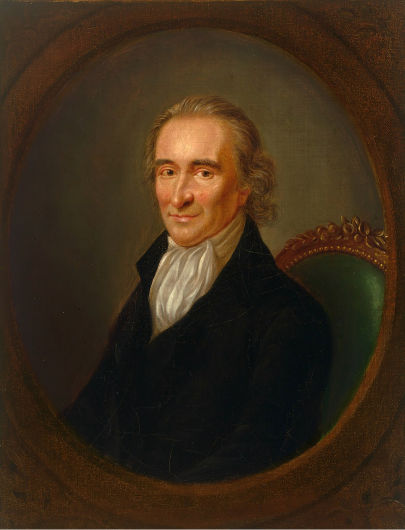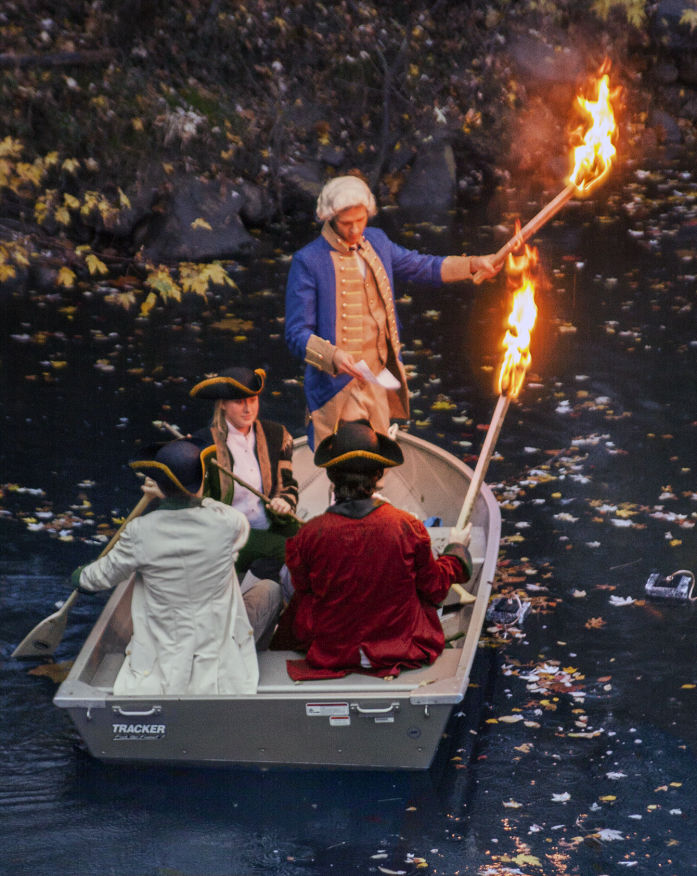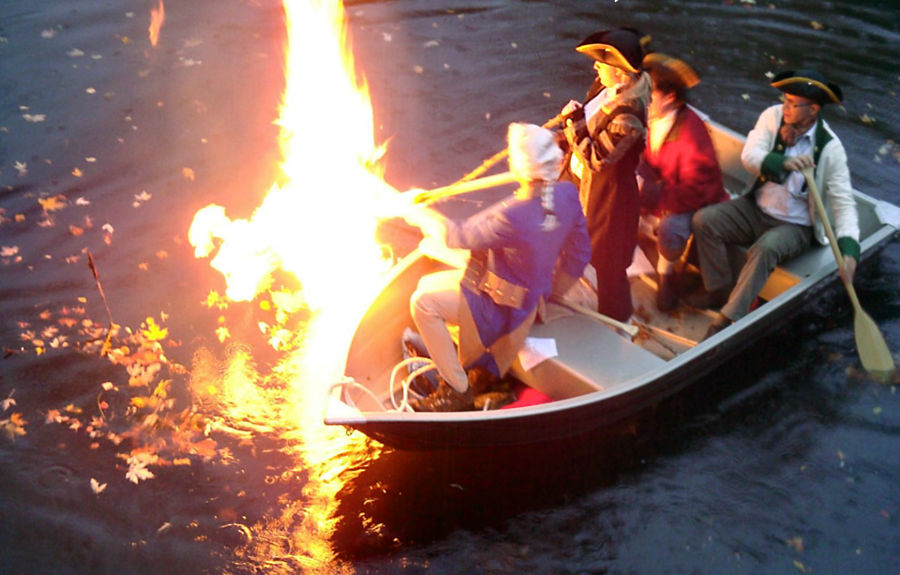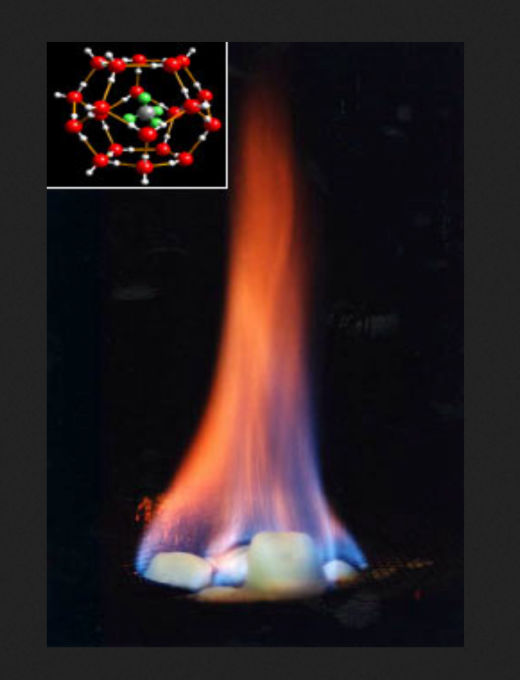"...a wandring Fire Compact of unctuous vapor, which the Night Condenses, and the cold invirons round, Kindl'd through agitation to a Flame, Which oft, they say, some evil Spirit attends, Hovering and blazing with delusive Light, Misleads th' amaz'd Night-wanderer from his way To Boggs and Mires, & oft through Pond or Poole, There swallow'd up and lost, from succour farr.”
― John Milton, Paradise Lost
The "fire compact of unctuous vapor", called "Will-o'-the Wisp" or "Jack-o-Lantern", has been given many other names, and legend has it that it haunts moors and bogs all over the world. But the conversation at Washington's headquarters in the Berrien House at Rocky Hill that led to the 1783 experiment on the Millstone River was of a more scientific nature. Country folk said that the water in the river by the mill at Rocky Hill could be set on fire. Was that true? And if so, what was the cause? General Washington was in residence at Rocky Hill as the Revolutionary War ended, waiting for the newly-signed Treaty of Paris to arrive. Thomas Paine visited Washington there. Paine believed that the flame in the water was caused by flammable air, but others disagreed. To test the hypotheses, Washington and Paine, with the help of General Lincoln and Colonel Cobb, set out in a boat to try to set fire to the Millstone River. (photo courtesy of Ron Morris)




